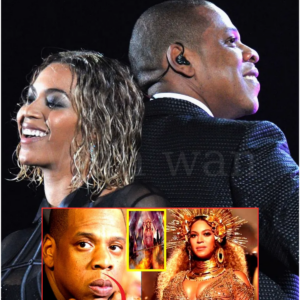Hardship as Fuel
:max_bytes(150000):strip_icc()/lilwayne_l-2-a720ffe94f124c6cb483bcd70ec331ea.jpg)
Lil Wayne was born Dwayne Michael Carter Jr. in 1982 in the Hollygrove neighborhood of New Orleans, Louisiana. Hollygrove was a notoriously rough area, plagued by poverty, gang violence, and drug trafficking. Growing up surrounded by these harsh realities undoubtedly left an indelible mark on the young Wayne.
From an early age, Wayne bore witness to the struggles of everyday life in Hollygrove. In interviews, he has vividly recalled seeing drug deals take place openly on street corners. Gun violence was common—one of Wayne’s childhood friends was even shot and killed. Poverty was also ever-present. Wayne’s family experienced financial hardship, at times relying on welfare to get by.

In tracks like “Go DJ” and “Tha Block Is Hot,” Wayne rapped about dealing drugs to support himself and his family financially. “The streets is a short stop, either rich or die tryin’/I’m grindin’ with the cocaine and marijuana,” he spat over a beat by Mannie Fresh. Clearly, the underground drug economy that operated all around him in Hollygrove had imprinted itself on Wayne’s psyche.

Wayne also frequently name-dropped Hollygrove in his songs, ensuring his upbringing in that rough environment was not forgotten. “Hollygrove, that’s where it all started/That’s where I’m from, that’s where I’m hearted,” he proclaimed on “Hustler Musik.” The gritty realities of Hollygrove had become an indelible part of Wayne’s identity and worldview.
As Wayne’s career progressed, he continued to draw lyrical inspiration from the hard times he witnessed in his childhood neighborhood. Even as his fame and fortune grew, Wayne stayed connected to his roots by rapping about the harsh realities many face in impoverished urban areas. Songs like “Tie My Hands” and “6 Foot 7 Foot” kept these issues at the forefront, reminding listeners where he came from.

Wayne’s unflinching depictions of poverty, violence and the underground economy resonated deeply with audiences, particularly those from similar backgrounds. His lyrics reflected the struggles many hip hop fans could directly relate to. This authenticity, borne from Wayne’s own experiences on the tough streets of Hollygrove, cemented his credibility and expanded his fanbase. The hardship of his upbringing had undoubtedly fueled Wayne’s rise to become one of hip hop’s most influential voices.
Music as Escape
While surrounded by the harsh realities of Hollygrove, a young Wayne found solace in music. He began developing a passion for rhyming at a very young age, memorably writing his first rap at just 8 years old. Music provided Wayne with a much-needed creative outlet and escape from his difficult circumstances.

Through rhyming and freestyling, Wayne was able to channel the emotions, experiences, and observations from his environment in a cathartic way. “Music was an outlet for me to vent,” Wayne reflected in an interview. He credits hip hop legends like Tupac and The Notorious B.I.G. with inspiring him to tell his own stories through rap.
Music became an all-consuming focus for Wayne, as he dedicated himself to honing his skills on the mic. He spent hours practicing complex flows and punchlines. Fellow rappers recall Wayne as a “studio rat” in his early days, constantly staying late to record additional verses. This intense work ethic was driven by Wayne’s desire to escape and transcend his surroundings through hip hop.
As Wayne’s rapping talent progressed, he began performing at local talent shows and freestyle competitions. This provided an important release and sense of accomplishment, especially as he gained recognition from crowds. “Performing live was better than any drug to me,” Wayne said. It offered validation that his dreams of making it big in hip hop were attainable.
Wayne channeled all the struggles he witnessed growing up in Hollygrove into raw, gritty lyrics. But his music was also infused with clever wordplay, unique flows, and boundless creativity. This blend of authentic street narratives and innovative delivery is what made Wayne’s early mixtapes, like the iconic “Dedication” series, so compelling and influential. Music had become far more than an escape for Wayne—it was his new reality and burgeoning career path. The creative outlet that once provided solace was now propelling him towards superstardom.
Ambition Ignited
Despite facing immense challenges while growing up in impoverished Hollygrove, Lil Wayne always possessed an unwavering ambition to succeed in hip hop. Even from a young age, Wayne was laser-focused on pursuing his rap dreams, driven by an unmatched work ethic and confidence in his abilities.
As a teen, Wayne relentlessly sought opportunities to get his music heard. He began performing at open mic nights and local shows as much as possible. When he wasn’t in the studio working on his craft, Wayne was networking and handing out mixtape demos, determined to spread his name in the New Orleans rap scene.
Nothing embodied Wayne’s ambition more than his persistence in getting signed to Cash Money Records. As a teenager, he would call the label daily, sometimes multiple times a day, asking to meet with founder Bryan “Baby” Williams. Wayne’s persistence eventually paid off, leading to a fateful studio session where his raw talent was recognized.
Once signed to Cash Money, Wayne approached his career with unmatched hunger and work ethic. He spent countless hours in the studio, constantly pushing himself to improve and outwork peers. Fellow rappers remember Wayne as one of the first in the studio and last to leave. This drive helped him rise through the ranks at Cash Money quickly based on musical merit alone.
Even in his breakout years, Wayne refused to rest on his laurels and continued honing his craft. He developed his iconic dedication mixtape series, releasing volume after volume to keep fans satiated and showcase new growth. Wayne also toured relentlessly both as a headliner and supporting act. This work ethic ingrained an insatiable ambition that still fuels him today.
Lil Wayne’s ambition was ignited by the determination to escape and transcend beyond the hardship of his Hollygrove upbringing. Through sheer force of will and unmatched work ethic, he propelled himself from the streets to become a global superstar, cementing hip hop’s belief that anything is possible through dedication to one’s dreams. Wayne’s rise serves as an inspiration for underdogs everywhere.
Lyrical Inspiration
Beyond just hardship and ambition, Lil Wayne also drew musical inspiration from New Orleans’ rich cultural melting pot. The city’s unique blend of musical styles, from jazz to bounce to brass bands, seeped into Wayne’s sound in impactful ways. This added another layer of authenticity and regional flavor to his raps.
New Orleans hip hop is rooted in the city’s traditions, and Wayne paid homage to this. His early lyrics referenced second lines, Mardi Gras Indians, and other hallmarks of NOLA culture. Songs like “Go DJ” incorporated bounce-inspired rhythms. Wayne also worked extensively with the city’s top producers, ensuring his beats captured its signature sound.
As Wayne’s career progressed, he continued experimenting with infusing regional styles into his music. His mixtape “Da Drought 3” featured him rapping over reworked versions of classic New Orleans jazz tracks. On “I Feel Like Dying,” Wayne slowed down the tempo over somber piano keys for an emotional ballad.
Wayne’s unique flows and wordplay were also influenced by New Orleans. His rapid-fire triplet style drew from second line rhythms. Complex internal rhyme schemes and multisyllabic rhyming harkened back to the city’s tradition of hip hop “chopping.”
This regional flavor resonated deeply with fans from New Orleans and beyond. It showed Wayne’s pride in his city and roots, further cementing his authenticity. The musical melting pot of NOLA served as lifelong inspiration for Wayne to experiment, evolve, and stay cutting edge. His sound became a signature blend of the hardcore hip hop he grew up on mixed with the city’s rich cultural influences. This helped separate Wayne as an artist and propel him to the top of the rap game.
News
Jaden Smith EXPOSES How He Was Sold To Diddy ! (VIDEO)
In a bombshell revelation, Jaden Smith has come forward with a shocking claim that has sent shockwaves through the entertainment industry. In a recent video that has gone viral, Jaden alleges that he was sold to music mogul Diddy. This…
Beyoncé Finally CATCHES Jay-Z’s FREAK-OFFS With Diddy!
In a shocking turn of events, Beyoncé has finally caught wind of her husband Jay-Z’s scandalous affairs with none other than music mogul Diddy. This revelation, made public through a video that has quickly gone viral, has sent shockwaves through…
Jennifer Lopez BREAKS the SILENCE about P Diddy FORCEFULLY going intimate with her against her will
In a stunning turn of events, global superstar Jennifer Lopez has broken her silence, revealing a harrowing secret that has haunted her for years. In a recent interview, she courageously shared her experience as a victim of forceful intimate affairs…
Jay Z released a Shocking Video Of The Ritual HisWife Beyonce Perform Every Night
Jay Z and Beyoncé: A Journey of Growth, Transformation, and Mutual Respect Jay Z and Beyoncé have long been considered the epitome of a power couple in the entertainment industry. Their journey together, marked by immense success, personal challenges, and…
Diddy Thrown Out Of Restaurant As Restaurant Guests Calls Him A R@p!st Immediately He Entered
Diddy Thrown Out of Restaurant Amidst Controversy: A Reflection on Discrimination and Public Treatment In a shocking turn of events, celebrity businessman Sean “Diddy” Combs found himself at the center of a public controversy when he was unceremoniously thrown out…
Justin Bieber OPENS UP On Diddy & Clive Davis AB*SING Him..
In a recent and revelatory interview, Justin Bieber has candidly discussed his tumultuous experiences with influential music industry figures Diddy and Clive Davis. This disclosure has left fans and observers alike stunned, shedding light on the darker side of Bieber’s…
End of content
No more pages to load






